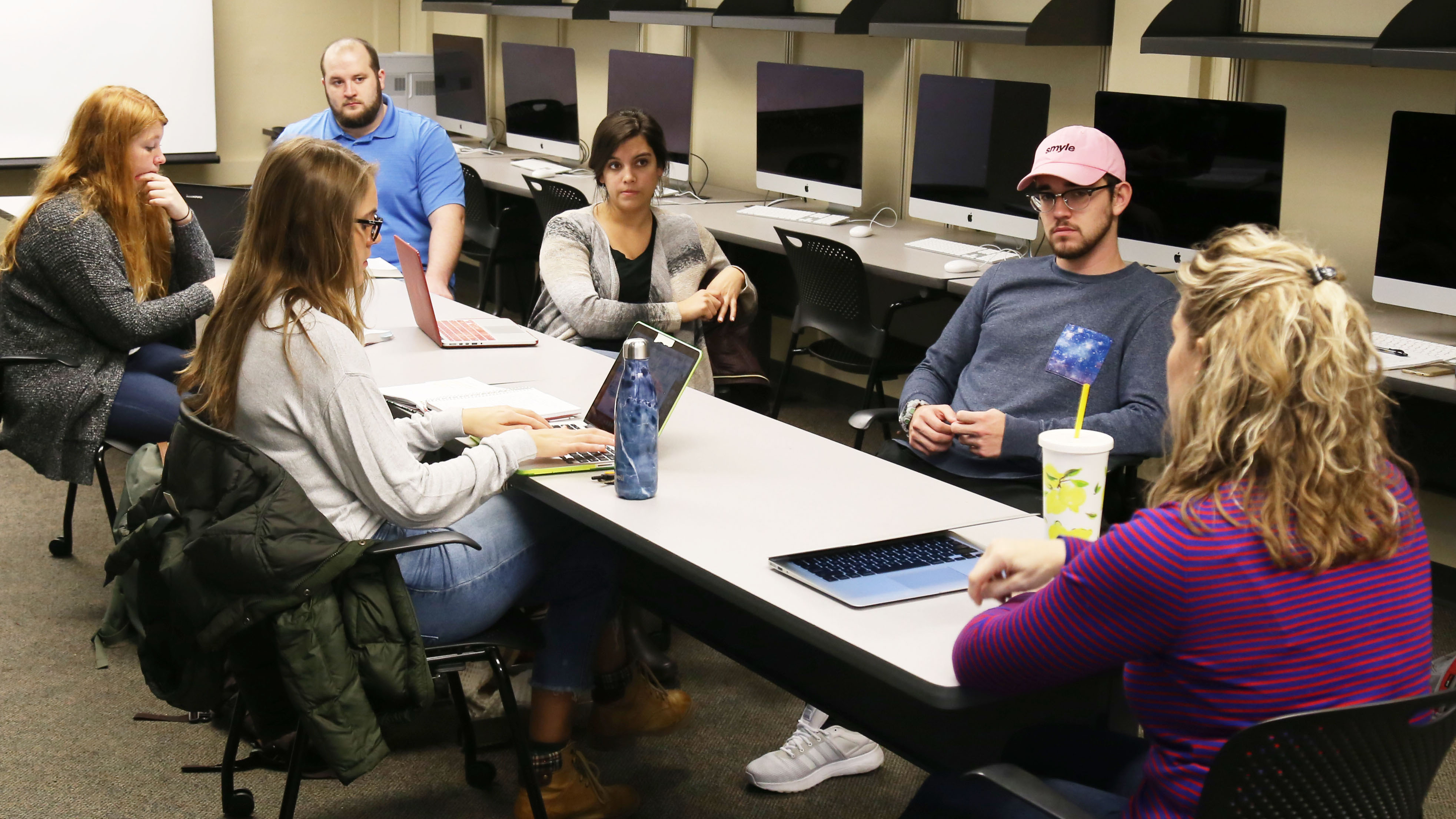
Data crunching, 20-source pieces and semester-long analyses may not be the first things that come to mind when thinking about journalism, but they’re important experiences students now have after taking Lecturer Lisa Oakes’ Digital Newsroom (JL MC 414X) class in fall 2017.
The students’ work, "Sustainable steps: A look at green efforts in the Iowa State community," explores sustainability issues related to land, water and electricity in Central Iowa. It was published as a series in January by the Iowa State Daily Media Group, as a collaborative project with the Greenlee School. The full series can be viewed on the Iowa State Daily’s website.
Focused on depth reporting, the new experimental course is designed to be a senior-level integrative experience so journalism majors can build on existing skills and collaborate to add depth reports to their portfolios.
"Depth reporting is a key skill not all students-or professionals for that matter-get to experience in today’s media climate. We get to give students a taste of the work that wins Pulitzers because of its depth," Oakes said.
After consulting with instructors teaching similar classes at peer institutions, Oakes decided to structure the classroom much like a newsroom; she served as editorial adviser and appointed a class "editor in chief."
Most classes operated like editorial staff meetings with team members updating each other, offering guidance and peer-editing one another’s work.
"I was really seeking self-starters," Oakes said. "It’s little structure paired with a lot of work. Students are ready to meet the challenge."
Each student was responsible for at least three pieces, including a depth profile completed early in the semester and two stories related to a bigger topic selected by the class. All reporting was immersive, requiring multiple sources and intense research.
Along with learning how to become comfortable with using data, students were encouraged to employ creative writing techniques to tell stories.
"Students learn to go one inch wide and a mile deep in their reporting," Oakes said. "Then they assess how to best tell the story. Sometimes that’s words. Sometimes it’s an infographic or a photo slideshow. We seek to prepare students for what today’s job market demands."
Megan Gilbert, senior in journalism and mass communication and French, found the class provided the luxury of time to do deeper reporting on one topic than she’d ever done before.
As a student who is minoring in environmental studies and focused on science communication, Gilbert also found the semester’s focus on sustainability was good experience that built on her previous courses, which included Science Communication (JL MC 347) and Public Affairs Reporting (JL MC 346).
"I used to be an arts reporter for the Daily, so my (published) pieces were kind of like ‘paint pottery in the MU on Wednesday night.’ Though that’s a great way to start your portfolio and get your feet wet in journalism, it’s not like a depth piece," Gilbert said. "Being able to say I can do these fun pieces about classes and write a 2,000-word article about prairie grass…it’s a good addition to anybody’s portfolio I think."
Experimental courses are typically offered several semesters. If they prove to be successful, they could become permanent additions to the course catalog.
For more information about Greenlee’s Digital Newsroom (JL MC 414X) course, contact [Lisa Oakes](/).